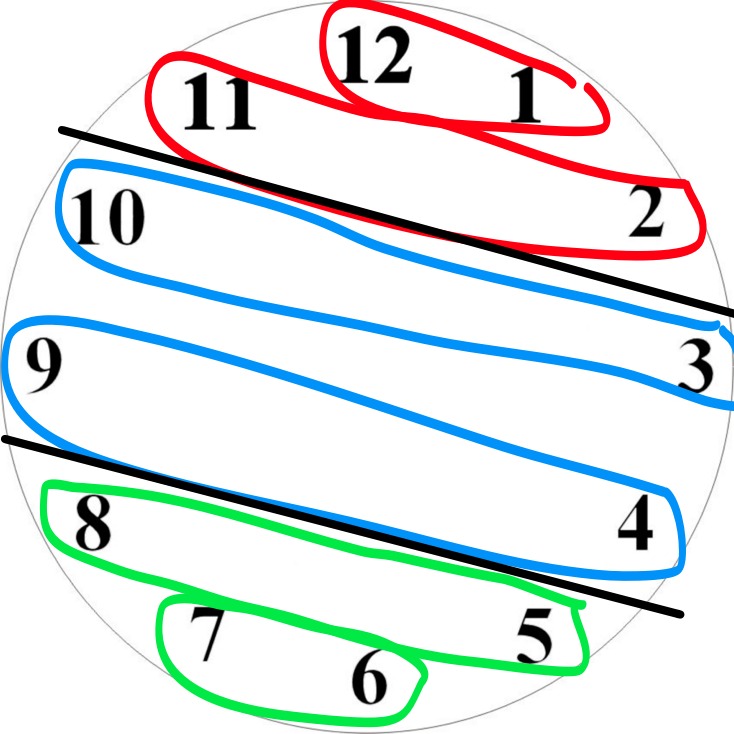I gave this problem to the Precalc Honors class, right before their lunch (the block is split into two parts). A couple of them came back with the solution, but most had chosen to eat and socialize (how dare they!). An epiphany hit me when I saw how a student had started to solve the problem. He added 1 + 2 + 3 + 4 + 5 + … + 11 + 12 to find out if the sum is divisible by 3 or 4.
My brain found the link to one of my very favorite math tricks / math stories: Little Gauss finding the sum of all the integers from 1 to 100.
So I put the following up on the board:
S = 1 + 2 + 3 + 4 + 5 + ... + 98 + 99 + 100. Find S.
Naturally a couple of the kids take the calculators out, so I go over and swipe the calculator out of their hands. I go through the whole story: An elementary teacher needed some quiet time to get stuff done, so the teacher asks the class to add all the integers between 1 and 100. Little Carl Gauss walks up in under a minute with the answer. Teacher is losing patience with this know-it-all, and asks him to add all the integers between 1 and 1000. Gauss strolls up in under a minute with the answer again. (Yes I dramatize the story. Sue me.)
So how’d he do it?
“You guys agree that I can write the numbers backwards and the sum will be the same right?”
S = 1 + 2 + 3 + 4 + 5 + ... + 98 + 99 + 100
S = 100 + 98 + 97 + 96 + 95 + ... + 3 + 2 + 1
What about if I add from top to bottom, what do I get?
2S = 101 + 101 + 101 + 101 + 101 ... + 101 + 101
How many 101’s is that?
2S = 101 x 100
…
S = 5,050
Go on to ask them what is the sum of all integers between 1 to 1,000 and find the following sum: 2 + 5 + 8 + 11 + … + 98 + 101.
Dividing Time Link
So back to the puzzler. Find the sum of the clock digits:
1 + 2 + 3 + 4 + 5 + 6 + 7 + 8 + 9 + 10 + 11 + 12 (then reverse them)
12 + 11 + 10 + 9 + 8 + 7 + 6 + 5 + 4 + 3 + 2 + 1
How many pairs (after you divide by the 2)?
6 pairs.
So how many divisions of the clock by the two lines?
4 divisions wouldn’t work, so 3 divisions.
What are the divisions? Lets keep the pairs together so the sums are equal in each section.
Neat:

